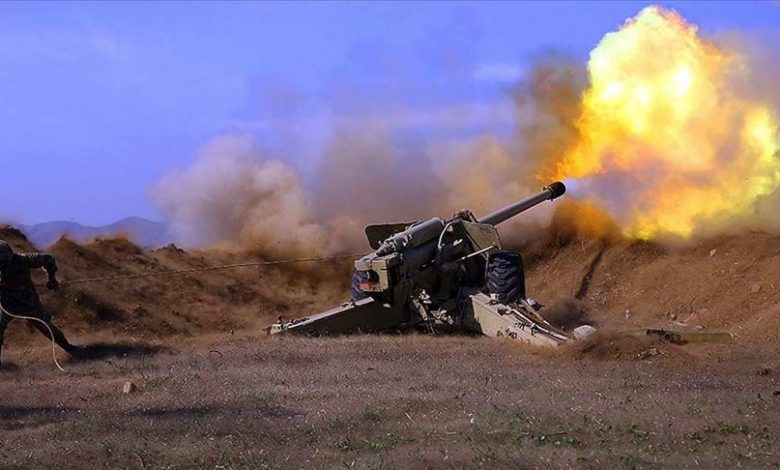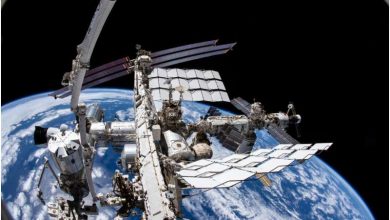Azerbaijan: Armenia not ready to accept borders, post-war reality

As more than 170 were killed in 48 hours of fighting between Baku and Yerevan, the spokesperson of Azerbaijan’s foreign ministry said that a political will is needed by Armenia to establish permanent peace in the region and resolve remaining disputes
rmenia is not ready to accept delimiting borders as well as the reality following the 2020 war, which saw Azerbaijan regain large swathes of its territory in the Karabakh region, the spokesperson of Azerbaijan’s Foreign Ministry said.
Speaking to Daily Sabah in an exclusive interview, Leyla Abdullayeva said: “The Azerbaijani side wants peace and normalization in the region. We never wanted tensions because we regained our occupied lands and we are working to reconstruct these areas and bring back life to the territories.”
On the reasons lying behind the latest clashes between the two sides on the border, Abdullayeva said that conflict erupted after the Armenian side started its provocations and Azerbaijan responded to these military targets. Another reason was what Abdullayeva called a “sabotage group” entering Azerbaijan’s territory and trying to plant landmines on supply routes despite an ongoing process of peace talks.
Since November 2020, 242 people have become victims of landmines, according to the Armenian foreign ministry. Abdullayeva said that Armenia accepted to provide the Azerbaijani side maps of the locations of the landmines but that these were not accurate.
“According to statistics, of the mentioned 242 cases, 50% have occurred outside the areas designated in the maps provided by Armenia. The issue is that Armenia is still continuing to massively plant landmines on Azerbaijani soil,” she explained.
She said that only in Lachin 1,300 landmines were found while it was written on the mines that they were produced in Armenia in 2021.
“In 2020, the country signed a trilateral statement ending hostilities, started the normalization process but in 2021 mines produced in Armenia are planted in Azerbaijan. This is another indicator that Armenia violates its commitments taken by the trilateral statements,” Abdullayeva said.
Abdullayeva highlighted that Azerbaijan would in no way want to start a renewed conflict and endanger its investments in the region as the country has engaged in a massive multibillion-dollar reconstruction of the areas liberated in Karabakh following the war.
Among these investments is the first international airport in the region, Fuzuli International Airport, already inaugurated, infrastructure as well as a second international airport in Zangilan, next to the border, to be opened at the end of September and the third one in Lachin planned to be inaugurated in 2024.
“So, many civilian people are currently working in the area. Azerbaijan has also started the return of former IDPs to the liberated territories. All these indicate that there is no interest from the Azerbaijani side to have these clashes in the region.”
After the conflict ended, Azerbaijan launched a massive reconstruction initiative in the liberated Karabakh region.
In July, Azerbaijan began the process of returning its people to land recaptured from Armenian forces in what Baku calls “The Great Return.” The oil-rich country has vowed to repopulate the recaptured lands.
Renewed clashes
A total of 71 Azerbaijani soldiers were killed in the latest skirmishes with Armenia.
Although an Armenian official said that a cease-fire was agreed between the two sides late on Wednesday, Abdullayeva told journalists that there is no official cease-fire but currently calm on the ground – although with high tension.
The fighting was the deadliest in almost two years, since a six-week war in 2020 left thousands dead and saw Azerbaijan regain significant previously occupied territory in Karabakh.
Abdullayeva reiterated that it was also the Azerbaijani side that initiated the peace process after the war and presented five principles upon which the comprehensive peace agreement should be built on. “Unfortunately, the Armenian side has not reciprocated the unilateral steps taken by Azerbaijan.”
“The deliberate provocations of Yerevan show that Armenia is not ready to accept the post-conflict realities in the region. It is also not ready to recognize the territorial integrity of Azerbaijan,” she said.
Meanwhile, on Tuesday, Armenia’s security council asked for military help from Moscow, which is obliged under the treaty to defend Armenia in the event of a foreign invasion.
Moscow is an ally of Yerevan through the Collective Security Treaty Organisation (CSTO) military alliance, but it also retains close friendly relations with Baku.
“Armenia has always tried to give the conflict an international character and to expand it which Azerbaijan has been against,” Abdullayeva said on Yerevan’s attempts to bring in Russia. She explained that in talks with the Russian side, Moscow only called for calm and resolving the conflict through dialogue and diplomacy.
The Ukraine conflict has changed the balance of power in the region, as Russia faces increasing international isolation.
The European Union has since led the Armenia-Azerbaijan normalization process, which involves peace talks, border delimitation and the reopening of transport links.
During EU-mediated talks in Brussels in May and April, Azerbaijani President Ilham Aliyev and the Armenian leader Pashinian agreed to “advance discussions” on a future peace treaty.
They last met in Brussels on Aug. 31, for talks mediated by European Council President Charles Michel.
“We are ready to normalize with Armenia and we will continue our efforts toward this but the first precondition is that Armenia recognizes Azerbaijan’s territorial integrity,” Abdullayeva said, indicating that the only reason there were no relations between the two countries before 2020 was due to the occupied territories.
Another continuing obstacle to the peace process is the continued presence of Armenian military forces on Azerbaijani soil despite the trilateral treaty saying otherwise, she explained.
Being asked why the conflict erupted just weeks after the two leaders were negotiating peace and why the signing of a peace agreement has not been achieved yet, the spokesperson said that “Armenia is coming up with new ideas and conditions not part of the previously agreed articles in the trilateral deal including in the opening of transportation routes and the delimitation of borders.”
Relations between the former Soviet republics of Armenia and Azerbaijan have been tense since 1991 when the Armenian military illegally occupied Karabakh, a territory internationally recognized as part of Azerbaijan, and seven adjacent regions.
Clashes erupted on Sept. 27, 2020, with the Armenian Army attacking civilians and Azerbaijani forces, violating several humanitarian cease-fire agreements.
During the 44-day conflict, Azerbaijan liberated several cities and around 300 settlements and villages that had been occupied by Armenia for almost 30 years.
The fighting ended with a Russian-brokered agreement on Nov. 10, 2020, which was seen as a victory for Azerbaijan and a defeat for Armenia.
However, the cease-fire has been broken several times since then.





